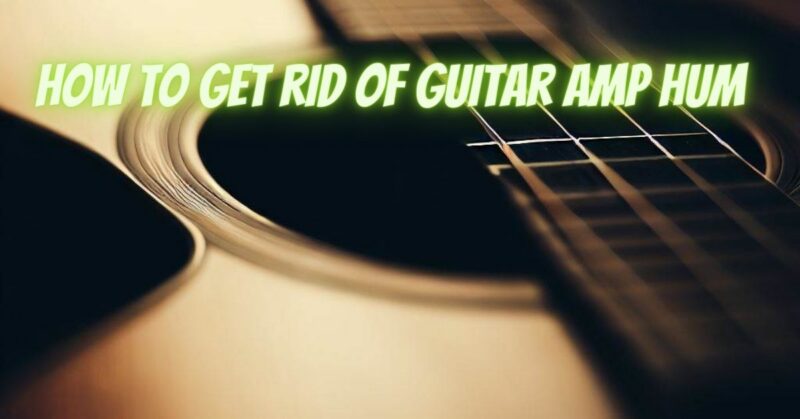Guitar amp hum can be an annoying issue that affects the sound quality of your playing and performances. This unwanted noise can detract from the overall experience and lead to frustration for guitarists. Fortunately, there are several steps you can take to minimize or eliminate guitar amp hum, allowing you to enjoy a noise-free amplifier. In this article, we’ll explore practical tips and techniques to help you get rid of guitar amp hum and achieve a clean and clear sound.
- Check Power and Grounding:
Ensure that your guitar amplifier is plugged into a properly grounded power outlet. A grounded outlet helps reduce electrical noise and interference. Avoid using ungrounded or two-prong adapters.
- Separate Power Sources:
If you’re experiencing ground loop hum (a type of hum caused by multiple devices being plugged into different power outlets), try plugging all your audio equipment, including your guitar amplifier, into the same power strip or power conditioner.
- Use High-Quality Cables:
Use high-quality, shielded cables to connect your guitar and pedals to the amplifier. Good cables help reduce interference and minimize hum.
- Test Different Cables:
If you suspect a particular cable is causing the hum, try using a different cable to see if the issue persists. Sometimes a faulty cable can be the source of the problem.
- Keep Cables Away from Electrical Sources:
Avoid running your guitar cables parallel to power cables or near sources of electromagnetic interference, such as lighting fixtures or electronic devices.
- Isolate Pedal Chain Noise:
If you use pedals, the order and quality of the pedals can impact noise levels. Place noise-generating pedals like fuzz or distortion closer to the amplifier, and use high-quality, low-noise pedals to maintain a cleaner signal path.
- Check Tubes and Components:
If your amplifier uses vacuum tubes, check them for signs of wear or damage. Faulty tubes can contribute to hum. Additionally, inspect the amplifier’s components for any signs of damage or malfunction.
- Properly Ground the Guitar:
Ensure your guitar has a properly grounded bridge and wiring. A poorly grounded guitar can contribute to noise issues when connected to the amplifier.
- Position the Amplifier:
Position the amplifier away from sources of electromagnetic interference, such as computer monitors or lighting fixtures. Experiment with the amp’s placement to find the least noisy position.
- Use Noise Reduction Pedals or Processors:
Noise reduction pedals or processors can effectively suppress unwanted noise in your signal chain, helping to eliminate hum and buzz.
- Consult a Professional:
If the issue persists or you’re unsure about performing these tasks yourself, seek the assistance of a qualified guitar technician or audio engineer. They can diagnose the problem accurately and provide tailored solutions to eliminate amp hum effectively.
Guitar amp hum can be caused by various factors, including power and grounding issues, cable quality, pedal chain noise, faulty components, and guitar grounding. By following these tips and techniques, you can effectively get rid of guitar amp hum and enjoy a clean and noise-free amplifier. Regular maintenance and using noise reduction pedals or processors can also help maintain a clear signal. Remember that eliminating amp hum may require some experimentation and patience, but achieving a noise-free amplifier will greatly enhance your playing and performance experience.


